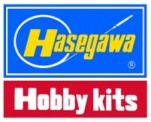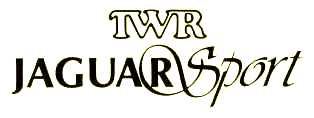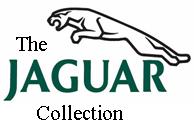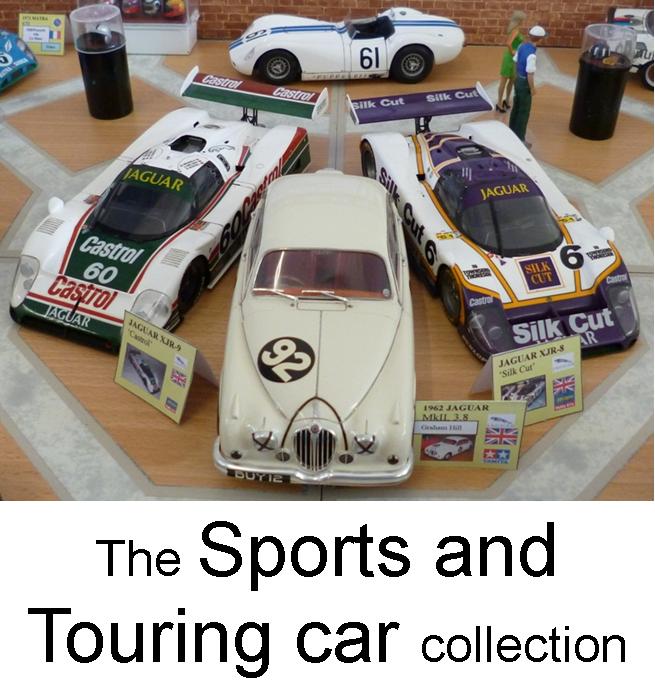Jaguar had been out of racing for some time when the idea of supporting a new racing programme was floated. The American team Group 44 Racing were supported with V12 engines for the Fabcar-built XJR-5 in the IMSA series. Once that side of the Atlantic was covered Jaguar linked up with long term Jaguar touring car customer team, Tom Walkinshaw Racing (TWR), to develop another car, the XJR-6 for the World Sportscar Championship, (primarily a European series) using the same Jaguar V12 engine. Jaguar gained reputation while others stood the major cost!
This system of different chassis for IMSA and WSC continued until 1988 when Jaguar chose TWR to take over both championships, building identical cars for both series, this would be the XJR-9.
The XJR-9, designed by Tony Southgate, was an evolution of the XJR-8. It had a 7Ltr normally aspirated V12 Jaguar engine based on the production 5.3Ltr unit used in the XJS road car. It was quoted as giving 600bhp but most of their competitors thought this figure to be conservative. Different variants of the XJR-9 would be designed for the differing race categories and situations. XJR-9LM would be specifically developed for Le Mans where high straight line speed and low-drag aerodynamics are required.
The XJR-9 debuted at the 24 Hours of Daytona wearing Castrol livery. Our car qualified 6th on the grid. Seventy five cars lined up in front of the grandstands rolling behind the pace car awaiting the start. The XJR-9 of Jan Lammers went into the lead at the start but got jumped on the banking and fell back to 3rd position with the other two TWR Jaguars running 5 and 6 going into the second lap. A race of attrition started with incidents and accidents taking cars out bringing out yellow flags and generally keeping every one guessing till late in the race. Even our Jaguar lost three laps with electrical problems, fuel feed problems and even needing to replace their bonnet at one point. Rain played it’s part in mixing up the field but the final throw of the dice fell to Martin Brundell who was in the right place at the right time so when the Yellows were thrown to recover a stranded car he was able to jump straight into the pits for a final service before anyone else. This pit stop elevated him into first place and car number 60 went on to take the over all win.
It was a bit of a false dawn for the IMSA project and the XJR-9 was unable to win again until the final race of the season.
In the World Sportscar Championship, running Silk Cut sponsorship, the XJR-9 met with much more success. The car took six victories, including Le Mans, Jaguar’s first Le Mans victory since 1957, and won the world championship for constructors, and drivers with Martin Brundle.


1/24th scale kit.
Built by Ian.
Ian built this model just befor the XJR-9 in mid 2011. Straight from the box this kerbside model has enough detail for a quick, straight forward build and is a lot of fun. Once the body is sprayed white there's not much else to do! To be fair the cockpit is simple but straightforward, it has enough detail for what can be seen but a bit extra wouldn't hurt. If you are of a mind to then carbon decal and extra wiring would be very effective.
The kit was very old when Ian got it and the decals fractured into many pieces, sometimes you can see this before you start cutting up the sheet in which case you can cover the surface of the decal with clear acylic varnish, this will hold the decal together during the soaking and positioning phases without any detriment to the decal. This wasn't the case this time and it took a while for Ian to cotton on as the decals looked ok. Another problem is the decal sheet has an error on it, the rear wing decals are the opposite clour to those on the car. Ian was able to use red primer to reasonably match the red brown but the closest colour for the green came from a decal sheet off a Williams FW07 kit. Once all the decals were set and touched up they were all covered over with Halfords clear lacquer to seal them down and give them a high gloss finish. This has to built up very slowly from very light coats as some decals do not take well to being covered with clear coats.
Hasegawa's kit uses several of the same sprues for the different versions so they can get the most out of the moulds. It means you end up with spare parts but also get very familiar with the kits. Building two of these kits almost simultaneously can be confusing at times but also fairly easy. While you have to ensure you get the correct parts with each car, painting them is easy as they are much the same colours....
RETURN TO -

